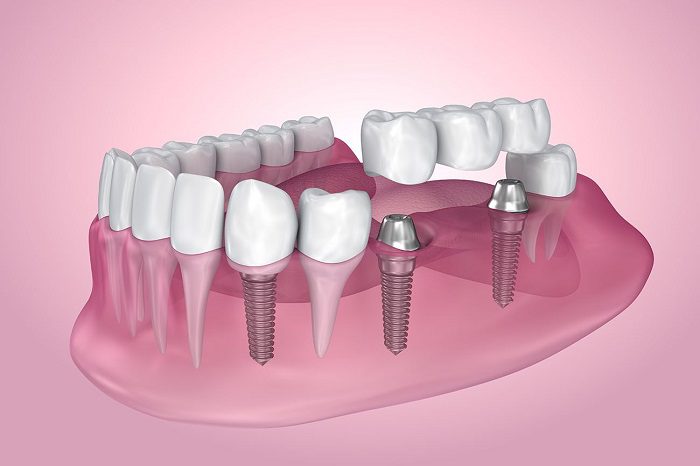Millions of Americans suffer from tooth loss. Many factors may cause you to lose a tooth. But these same dental dangers may mean that several teeth could fall out of their sockets. Even losing a single tooth could pose a serious threat of further oral health complications.
You should speak to your dentist about ways to replace these missing teeth. They will evaluate your preferences and existing dental structure to find a restorative dental solution that will accomplish your unique oral health goals.
Tooth loss does not affect everyone in the same way. So you can anticipate a personalized approach to this tooth replacement treatment plan if you want to replace multiple missing teeth. Read on to learn about the different ways your dentist can restore your smile if you lose more than one tooth.
Consecutive Tooth Replacement
Have you lost several teeth in a row? Your dentist can recommend a dental bridge to replace these missing teeth and restore your smile. Depending on your comfort levels and oral health, your dentist can offer you either a traditional bridge or an implant-supported one.
A traditional dental bridge can replace one or several teeth. The device features prosthetic teeth with dental crowns on each end of the appliance. The dentist secures the crowns to the teeth adjacent to the missing teeth, keeping the bridge in place with dental cement.
The implant-supported bridge relies on two surgically placed anchors in the jaw – one for each end of the dental prosthetic. The device replaces three or more consecutive missing teeth and does not need support from adjacent teeth thanks to the anchors.
A dental implant will take longer to receive, but you can see lifelong results from this type of bridge. The traditional option will last for around fifteen years before needing replacement.
Replace Missing Teeth Throughout Your Smile
Tooth loss can impact different areas of your mouth, affecting both the top and bottom arches of teeth. But your dentist can still completely restore your smile by providing you with multiple devices to replace these teeth.
A dentist can give you more than one dental implant if needed to replace all missing teeth in your smile. You can receive a single implant to replace one missing tooth. And your dentist can implant all devices in one procedure to reduce the length of your treatment. Learn more when you schedule a dental consultation.
Full Mouth Restoration
Some patients might need to replace an entire row of missing teeth on the top or bottom arches or both. Your dentist can still help you fully restore your smile using implant-supported dentures.
You may benefit from an All-on-Four implant, which uses four anchors to sustain a full arch of prosthetic teeth. The dentist will need to check your jawbone and gum health to ensure you have enough structure to support these devices. If not, you may need further dental intervention to build strength in these areas before you can begin tooth replacement treatment.

